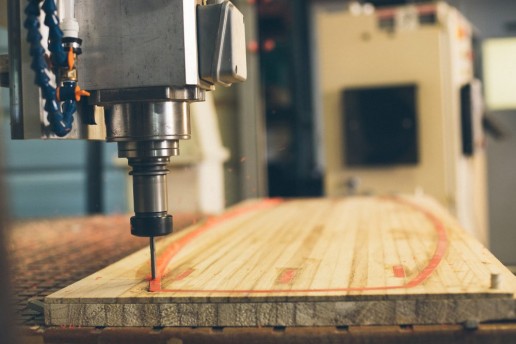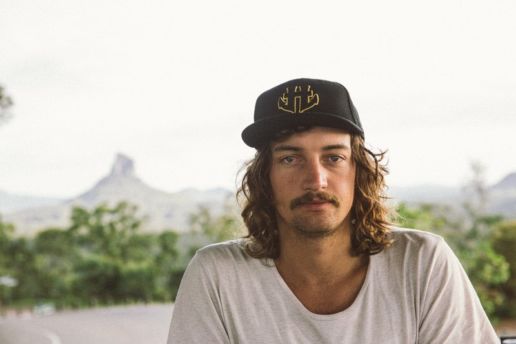Here are the 7 key wakeboard positions you need to learn for a strong heelside edge.
The Setup:
Wakeboard positions can get a little awkward at times. We get it. To set up for a toeside wake jump a wakeboarder has to edge out on their heelside edge away from the wake first. More often than not, this puts the focus on their toeside edge in and toeside air off the wake.
The problem with this is when a rider focuses only on their edge into the wake. Bad edging habits begin to develop with the initial edge out. If a rider edges outward heelside ten times (with the intention of a toeside air) with poor technique and bad position, this repetitive bad technique will start to be ingrained into muscle memory.
Then, when the rider goes to air the other side of the wake on the heelside approach, they are highly likely to use this bad technique. This will affect the position through the heelside wake jump and outcome of the air. Now, it’s pretty obvious that when a rider edges away heelside from the wake ten times with good positioning it will also help them on the other side of the wake. This stands true for experienced riders, but is even more important for beginner wakeboarders. This will build a good foundation for riding both behind a boat and at your local cable park.
Bad body position wastes energy for edging back into the wake. Your edge out should be the time to conserve energy, relax, and focus for your air from your edge back in. With this in mind, we’ll describe the proper position for edging starting at the top with the head and work our way down to the board itself. We’ll be pointing out the 7 key things that you need to have in place for a strong heelside edge.
How to edge heelside out (away from the wake):
Head Position:
It’s always best to look before you start moving. This is a natural human movement that should carry over to your riding from just walking around. Typically you look before you take your first step. This motion of looking actually makes your body lean before you take a step. On the water, if you look out away from the boat in the direction you want to go you will lean naturally and slightly in the proper direction with ease. It’s the same natural tipping motion that happens on normal ground, all created by just looking. To compliment this “look lean” we’ll talk about how the knees should react and compliment this in the sections below.
Shoulder Position:
Your shoulders should stay square to the boat tower the entire time you edge out. If your shoulders are not square to the tower, this will give you unequal weight distribution. We can also use the corners of the wakeboard handle. This is the part of the handle that the side rope extensions attach to the grip making a triangle. The wakeboard handle corners should also be square to your shoulders. It’s also important to keep the handle level and not tilted or pushed in the direction you want to go. this happens frequently with beginners. It’s like they are trying to steer with the handle – not good.
Arm Position:
As I previously mentioned in the “shoulders” section, the handle has two short side rope extensions that make up the triangle of the handle. Think of these short lengths of rope as an extension of you arms that extend the triangle of the handle to your chest. When you turn, the handle turns your hands, which twist your arms, which then tilt your shoulders. This is why it’s important to keep your arms relaxed like an extension of the rope.
If you start to pull the handle with your arms or pull with one arm more than the other, you’ll put yourself in a bad edging position. Your goal is to lean back, so your arms are helping to resist the pull forward from the line slightly to offset your leaning back. However, pulling with your arms too far forward reduces the power of your edge. Don’t pull yourself towards the handle. It’ll tire you out quickly, kill your edge speed, and put you in bad position for an edge.
Try to keep your arms relaxed but resist the pull forward. Then allow gravity to naturally let the handle hang low. It should feel like the pull is tugging from your waist or below – not your shoulders or chest.
Chest & Belly Position:
I refer to the belly in this section because this is a key component on starting your edge properly, second to your knees. Most riders drop their butt down towards the water, which causes a chain reaction of bad position. When you drop your butt down your hips go out back behind you. Then, your chest comes forward while your belly points down towards the water. This all equals bad leverage, bad habit and will lead to a bad faceplant. The correct movement should be to point your belly up towards the sky as you start your edge – move your hips forward, point your chest up, and your shoulders will fall back. Your knees make your belly point up (good) or down (bad). More on that in a second.
Hip Position:
Hip positioning is controlled by your knees and belly. Your goal in wakeboarding should be to keep your hips at least slightly in front of you towards the boat at all times in order to be in control when edging. Your hips should be level with the water and square to the boat tower or handle corners while edging out heelside. This is the same as your shoulders and how we mentioned they should be square to the handle corner. The more your hips are in front of you the closer they will be to the handle. Good hip position is very important so keep those hips in front of you.
Knee Position:
Okay, this is a key component of your heelside edge. When you are a few feet outside the wake starting your edge out you should start the leaning motion with your head first. Most wakeboarders think it’s your shoulders that follow next…it should be your knees! Here’s why. Your knee movement dictates the rest of your body movement. I like to use the “rolling your knees forward” terminology to describe how you should use your knees to start edging. If you say “bend your knees”, most riders will just sit down – and this causes your hips and butt to drop down and back. This will create a bad edge position right away.
Gently roll your knees forward over your toes to start your edge. This causes your shoulders to fall back over your heels and your hips will move forward along with your knees. If your arms stay relaxed everything will fall in line and you will naturally fall back over your heelside edge in proper position with great leverage. This position will build good edge initiation and will generate a quicker edge speed. It will also use less energy and allow you to focus on your edge in. Remember, this is the key to starting your edges out, so roll those knees forward after looking where you want to go.
Board Position:
Most wakeboarders believe that they should point their wakeboard out to start edging out. They do this by using their feet to tilt or push the board in the direction they want to go. Using your feet actually contributes to a chain reaction of bad position. Trying to tilt or push your board around with your feet will cause your hips and butt to drop back and down. It will also cause your belly to point down and your shoulders to move forward. Everything you don’t want.
My suggestion is to allow the board to do what it wants to do naturally by following the positions in the image above. Whatever you do with your upper body will translate down to the board and its edge. So, in summary don’t think about the board. Start by looking which starts a slight lean and slight outward movement. At the same time you roll your knees forward over your toes, which causes your hips to move forward. This makes your belly point up and your shoulders to fall back over your heelside edge. You know have a strong powerful edge with much less effort.
Remember this: “don’t move the board, move your body correctly and this will make the board edge properly.”
To summarize the entire technique, start your edge out with good habits! Look outward where you want to edge out, and begin by rolling your knees forward. Then point your belly upward towards the sky and allow your level shoulders to fall back with relaxed arms and low hanging hands. Okay, now go give ‘er a try!
Next Steps:
Is your board uncomfortable to edge on? Check out our shop and see what works best with your riding style — or customize one of your own! Need more help deciding? Learn more about how to buy a wakeboard, why we like Flex wakeboards, use M6 Binding Inserts, how to choose your size, or even how to edge better. Enjoy!
Have any further questions about the correct edging technique? Submit them in the comments below. Also if you found this article helpful, please share!
Sign up. Get $50 instantly & Access Humanoid Wakeboard's Live Streams, Content & Events.
Related Posts
November 27, 2018
Want a wakeboard sponsorship? Here’s what you need to know.
Wakeboard sponsorship has changed…
September 6, 2018
Everything after wakeboarding. A guide for Surf Expo Orlando [The Best Orlando Golf Courses]
Everything to do after wakeboarding.…
August 15, 2018
Adjusting your wakeboard rope is the best kept secret to crush your trick list.
The progression of learning and landing…
April 26, 2018
Using Creative Brand Collabs To Grow Your Business [Finding Inspiration In Street Art]
How did skateboarding start at the top…
March 19, 2018
Wakesurfing on a budget: Ever tried ‘Dronesurfing’?
With cable systems helping wakeboarding…
July 10, 2017
Top 10 Recommended Lines On Kaesen Suyerhoud’s Unit Wakeboard Feature
Instead of releasing a 'run of the…
April 13, 2017
Humanoid Wakeboards Warranty: All Good Forever Lifetime & Impact Insurance
From Day 1 we've experimented with…
November 24, 2016
15 Of The Best Wakeboard Tools We Use On The Regular
For the upcoming season we are going to…
July 26, 2016
Cable Wakeboard Magazine: The Renovation Contest
April 8, 2016
Tag Your Wakeboard or Wakesurfer The Cheap, Quick & Easy Way
Dust off your wakeboard and give it a…
December 8, 2014














